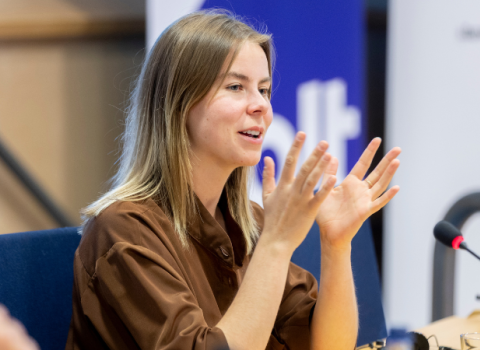EUROIMMUN AG is one of the first European diagnostics companies to offer CE-marked antibody detection systems to support COVID-19 diagnostics. These tests can be used to identify people who have already come into contact with the virus. This is important since it offers a means of tracking down individuals who have already recovered from the infection and are thus highly likely to have developed immunity to a repeat infection with SARS-CoV-2. The Fraunhofer Research Institution for Marine Biotechnology and Cell Technology EMB in Lübeck, Germany, is supporting EUROIMMUN AG in its efforts to scale up the production of the new serological test systems for COVID-19 diagnostics to the levels required for large-scale, mass-market deployment.
Numerous stakeholders from industry, research, government and wider society are striving to contain the current coronavirus pandemic in order to help countries gradually find a path back to normality. Key tools required to achieve this include test methods that can identify individuals who were exposed to the virus some time ago and had an immune response, based on the assumption that these individuals are now immune to SARS-CoV-2. EUROIMMUN AG is one of the first European diagnostics companies to offer CE-marked antibody detection systems to support COVID-19 diagnostics. These test systems can be used to detect antibodies against SARS-CoV-2 in the blood. The task now is to ramp up the production of these tests to the greatest possible capacity. To achieve this, the Fraunhofer Research Institution for Marine Biotechnology and Cell Technology EMB is dedicating its technical laboratory infrastructure and expertise to support EUROIMMUN AG in producing bulk quantities of the antigens required for the test systems. This will provide significant amounts of the raw materials needed to make the test kits.
“Producing the antigens we use in the test systems is a very complex and time-consuming process, so we are extremely grateful to have Fraunhofer EMB working with us. Their support will give a significant boost to our efforts to meet the huge global demand for the Anti-SARS-CoV-2 ELISA test kits,” says Dr. Wolfgang Schlum-berger, CEO of EUROIMMUN AG.
Professor Reimund Neugebauer, president of the Fraunhofer-Gesellschaft, is confi-dent the partnership will bear fruit: “Working at the forefront of the fight against the SARS-CoV-2 pandemic, Fraunhofer experts are now supporting industry and society in their efforts to deal with its immediate effects and future consequences. By making test systems available for use on a large scale, I’m convinced this new cooperation will make an important contribution to containing the coronavirus pan-demic.”
Expertise and infrastructure
The Fraunhofer Research Institution for Marine Biotechnology and Cell Technology EMB specializes in two key areas, one of which is the development and commercial exploitation of cell-based technologies. Key focal points include the industrial pro-duction of adherent cell cultures – in other words, anchorage-dependent cells grown outside the body. Thanks to Fraunhofer EMB’s research infrastructure and expertise in the field of cell culture and protein production, Fraunhofer experts are the ideal partners to help EUROIMMUN AG achieve its goal of mass-producing the new test system in order to meet national and worldwide demand.
Professor Charli Kruse, director of the Fraunhofer Research Institution for Marine Biotechnology and Cell Technology EMB, explains the crucial role of cell cultures: “Cells grown outside the body are an important tool in medicine. Cell cultures can be used to assess and standardize high quality biomolecules and mass-produce them according to individual specifications. Scientists at Fraunhofer EMB have many years of experience working with this tool and have successfully used it as a platform for launching a number of new developments. That’s why they are able to offer such rapid and professional support to EUROIMMUN AG in this area. Even so, many more of the processes involved in this task will need to be automated in the future in order to make better use of this source of raw materials.”
This article was first published on 9 April by Fraunhofer.




 A unique international forum for public research organisations and companies to connect their external engagement with strategic interests around their R&D system.
A unique international forum for public research organisations and companies to connect their external engagement with strategic interests around their R&D system.